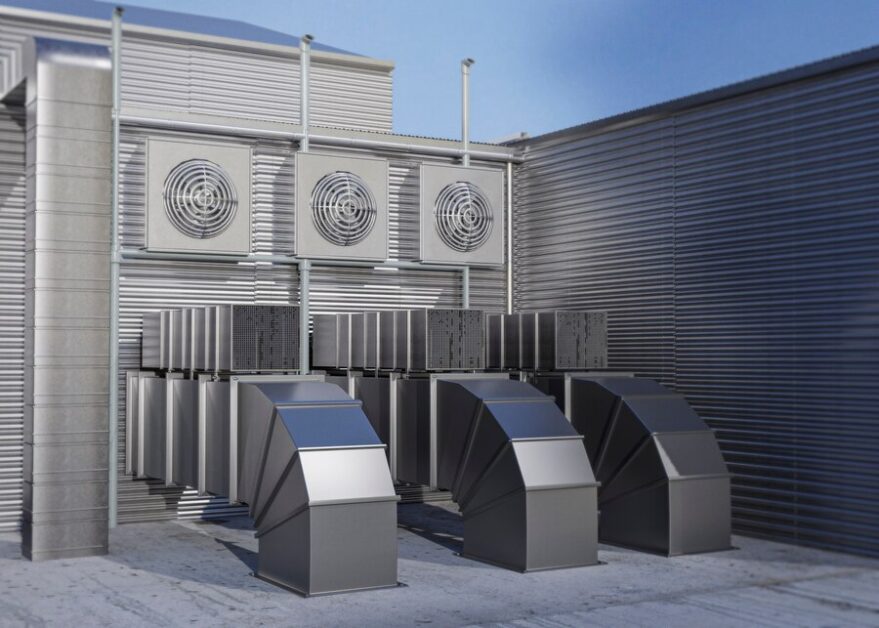How to Control the Speed of Your Inline Fans for Optimal Airflow
Table of Contents
Improving Air Quality: Utilizing Inline Fans for Effective Ventilation and Air Exchange
Most gardening enthusiasts understand the importance of ensuring adequate air circulation and exchange within their indoor gardens. One of the most effective methods to achieve this is by utilizing inline fans. Inline fans are specifically designed to efficiently move air through ventilation systems, keeping the air fresh and preventing the buildup of stale air or excess humidity.
These fans are typically installed within the ductwork of a ventilation system, allowing them to draw air in from one location and expel it in another. By strategically placing these fans at key points within the garden, gardeners can ensure that air is constantly flowing, carrying away any contaminants, odors, or excess heat. This not only helps to maintain optimal air quality but also promotes healthier plant growth, as plants require a constant supply of oxygen for photosynthesis and proper respiration.
When choosing inline fans for your indoor garden, it is essential to consider factors such as the size of your garden, the required air exchange rate, noise levels, and energy efficiency. Opt for fans that are specifically designed for horticultural applications, as these are often equipped with features such as variable speed controls and high-performance motors. These features allow gardeners to adjust the fan speed according to their specific requirements, ensuring an ideal balance between air exchange and noise levels. By investing in high-quality inline fans, gardeners can effectively improve air quality within their indoor gardens, ultimately leading to healthier and more productive plants.
• Inline fans are crucial for ensuring adequate air circulation and exchange in indoor gardens
• These fans efficiently move air through ventilation systems, preventing the buildup of stale air or excess humidity
• They are installed within the ductwork of a ventilation system to draw in air from one location and expel it elsewhere
• Strategically placing inline fans at key points ensures constant airflow, removing contaminants, odors, and excess heat
• This promotes healthier plant growth by providing a constant supply of oxygen for photosynthesis and respiration
• When choosing inline fans, consider factors such as garden size, required air exchange rate, noise levels, and energy efficiency
• Opt for horticultural-specific fans with features like variable speed controls and high-performance motors
• These features allow gardeners to adjust fan speed according to their specific requirements
• Investing in high-quality inline fans improves air quality in indoor gardens leading to healthier and more productive plants.

Advanced Speed Control Techniques: Expl
Speed control techniques are a critical aspect of various industries, including manufacturing, transportation, and energy. These techniques enable precise regulation of speeds, ensuring optimal performance and efficiency of machines and vehicles. Additionally, advanced speed control techniques provide enhanced safety, reducing the risks of accidents and equipment damage.
Certainly! Here’s a table summarizing Advanced Speed Control Techniques for Induction Motors:
| Control Technique | Description | Advantages |
|---|---|---|
| Vector Control | Utilizes field-oriented control (FOC) to independently control motor torque and flux. Provides high dynamic performance and efficiency. | – Wide frequency range – Low switching loss |
| Direct Torque Control (DTC) | Estimates stator and rotor flux and torque without sensors. Ensures quick dynamic response. | – Sensorless operation – Fast torque control |
| Adaptive Control | Adjusts control parameters based on changing motor characteristics or operating conditions. | – Robust performance – Adaptability |
| Optimal Control | Optimizes motor performance by minimizing a cost function. Requires accurate motor models. | – Efficiency improvement – Precise control |
| Intelligent Control | Utilizes AI techniques (e.g., neural networks, fuzzy logic) for speed regulation. | – Adaptive to varying conditions – Enhanced performance |
These techniques enhance the efficiency, reliability, and dynamic behavior of induction motor drives, making them suitable for various applications in commercial, industrial, and utility fields
One of the primary methods utilized for speed control is the use of variable frequency drives (VFDs). VFDs control the speed of an electric motor by adjusting the frequency and voltage of the power supply. This allows for fine-tuning of motor speeds, leading to accurate and efficient operation. VFDs offer numerous benefits, such as energy savings, improved motor life, and reduced maintenance costs. With their advanced control algorithms and user-friendly interfaces, VFDs provide a versatile solution for speed control in various applications.
• Variable frequency drives (VFDs) are a commonly used method for speed control in various industries.
• VFDs adjust the frequency and voltage of the power supply to regulate the speed of an electric motor.
• This fine-tuning capability allows for precise and efficient operation of machines and vehicles.
• VFDs offer benefits such as energy savings, improved motor life, and reduced maintenance costs.
• Advanced control algorithms and user-friendly interfaces make VFDs a versatile solution for speed control.
For better experience watch the below video.
How can inline fans improve air quality in a ventilation system?
Inline fans are designed to effectively ventilate and exchange air, thereby improving air quality in a ventilation system. They can remove stale air, odors, and pollutants, ensuring a fresh and clean environment.
What are the benefits of utilizing inline fans for air exchange?
Inline fans offer several benefits for air exchange, including improved indoor air quality, reduction of humidity levels, prevention of mold and mildew growth, and efficient removal of airborne contaminants.
How do advanced speed control techniques enhance the performance of inline fans?
Advanced speed control techniques allow for precise regulation of the fan’s speed, resulting in optimized air flow and energy efficiency. These techniques enable users to adjust the fan’s speed according to specific requirements, ensuring optimal ventilation and air exchange.
Can advanced speed control techniques help in reducing energy consumption?
Yes, utilizing advanced speed control techniques can significantly reduce energy consumption. By adjusting the fan’s speed based on actual needs, energy is conserved, leading to lower electricity bills and a more sustainable operation.
Are there any additional benefits to using advanced speed control techniques?
Apart from energy savings, advanced speed control techniques can also prolong the lifespan of inline fans by reducing wear and tear. Additionally, they provide quieter operation, allowing for a more comfortable and peaceful indoor environment.
Can inline fans with advanced speed control be integrated into existing ventilation systems?
Yes, inline fans with advanced speed control can be easily integrated into existing ventilation systems. They are compatible with various ventilation setups and can be retrofitted without major modifications.
Are there any maintenance requirements for inline fans with advanced speed control?
Like any mechanical equipment, inline fans with advanced speed control require regular maintenance. This includes cleaning or replacing air filters, checking for any obstructions or debris, and ensuring proper lubrication of moving parts as recommended by the manufacturer.
Are inline fans with advanced speed control suitable for both residential and commercial applications?
Yes, inline fans with advanced speed control are suitable for both residential and commercial applications. They can be effectively used in homes, offices, warehouses, restaurants, hospitals, and various other settings where ventilation and air quality are important.
Can inline fans with advanced speed control be controlled remotely?
Yes, many inline fans with advanced speed control offer remote control options. This allows users to conveniently adjust the fan’s speed and settings from a distance, providing flexibility and ease of use.

Nicole Burke is a dynamic writer at SouthElMonteHydroponics, fueled by her passion for horticulture and environmental sustainability. Armed with a degree in Environmental Science from a renowned institution, Nicole’s expertise lies in hydroponic gardening, organic farming, and biodiversity conservation. Her insatiable curiosity and love for nature drive her to explore innovative techniques in hydroponics, seeking to revolutionize the way we grow crops in urban environments. Nicole’s writing reflects her deep commitment to promoting eco-conscious practices and fostering a deeper connection between humans and the natural world. Through her engaging storytelling, she inspires others to embrace sustainable living and harness the power of hydroponics for a greener future.






